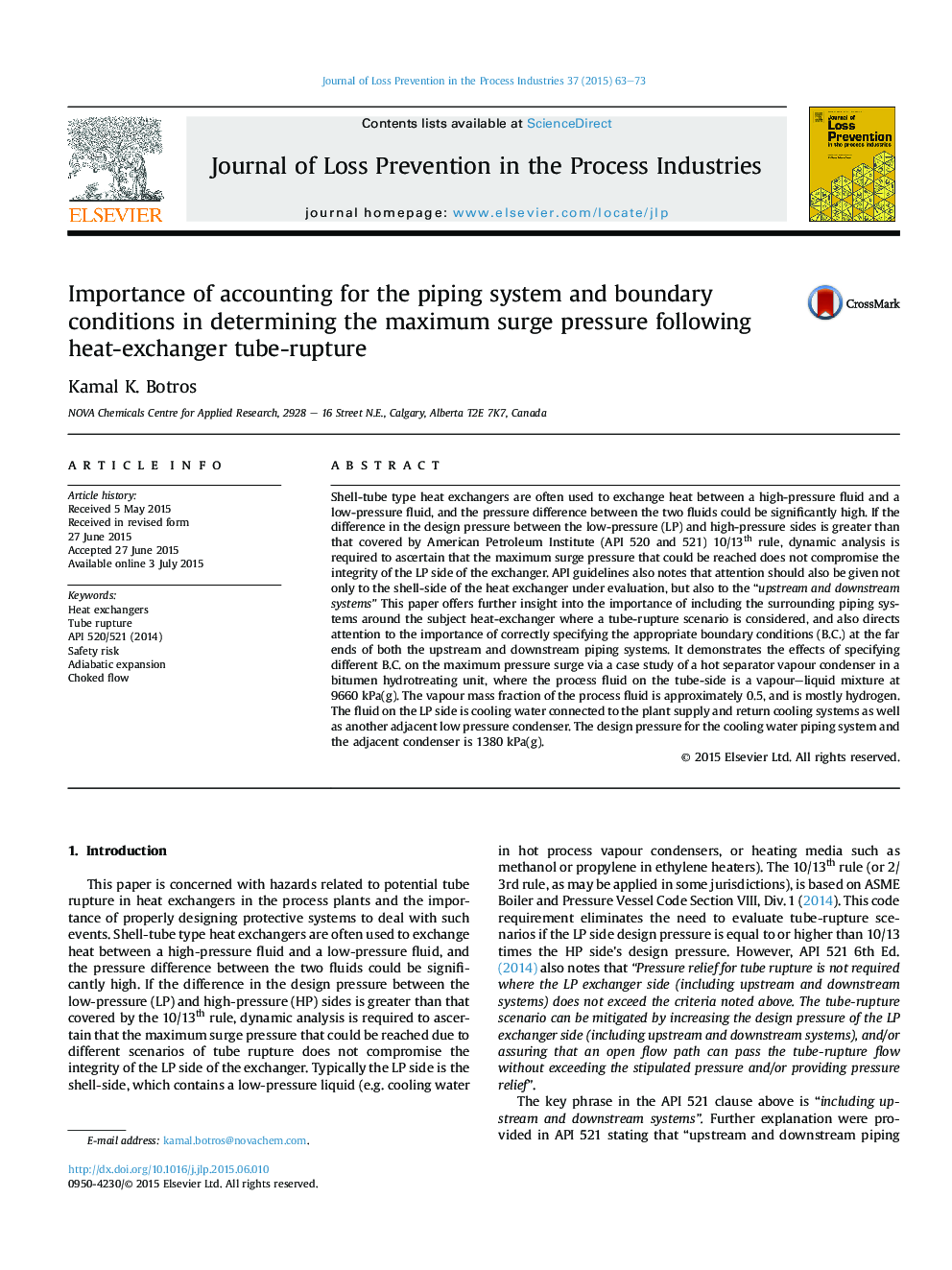| کد مقاله | کد نشریه | سال انتشار | مقاله انگلیسی | نسخه تمام متن |
|---|---|---|---|---|
| 586091 | 1453271 | 2015 | 11 صفحه PDF | دانلود رایگان |
• Dynamic equations describing pressure surge from a tube rupture.
• Methodology for determining the release rate from isentropic and Fanno flow through ruptured tube.
• Adiabatic flashing of the effluent inside the shell.
• Effects the connecting upstream and downstream piping and Boundary conditions.
Shell-tube type heat exchangers are often used to exchange heat between a high-pressure fluid and a low-pressure fluid, and the pressure difference between the two fluids could be significantly high. If the difference in the design pressure between the low-pressure (LP) and high-pressure sides is greater than that covered by American Petroleum Institute (API 520 and 521) 10/13th rule, dynamic analysis is required to ascertain that the maximum surge pressure that could be reached does not compromise the integrity of the LP side of the exchanger. API guidelines also notes that attention should also be given not only to the shell-side of the heat exchanger under evaluation, but also to the “upstream and downstream systems” This paper offers further insight into the importance of including the surrounding piping systems around the subject heat-exchanger where a tube-rupture scenario is considered, and also directs attention to the importance of correctly specifying the appropriate boundary conditions (B.C.) at the far ends of both the upstream and downstream piping systems. It demonstrates the effects of specifying different B.C. on the maximum pressure surge via a case study of a hot separator vapour condenser in a bitumen hydrotreating unit, where the process fluid on the tube-side is a vapour–liquid mixture at 9660 kPa(g). The vapour mass fraction of the process fluid is approximately 0.5, and is mostly hydrogen. The fluid on the LP side is cooling water connected to the plant supply and return cooling systems as well as another adjacent low pressure condenser. The design pressure for the cooling water piping system and the adjacent condenser is 1380 kPa(g).
Journal: Journal of Loss Prevention in the Process Industries - Volume 37, September 2015, Pages 63–73
